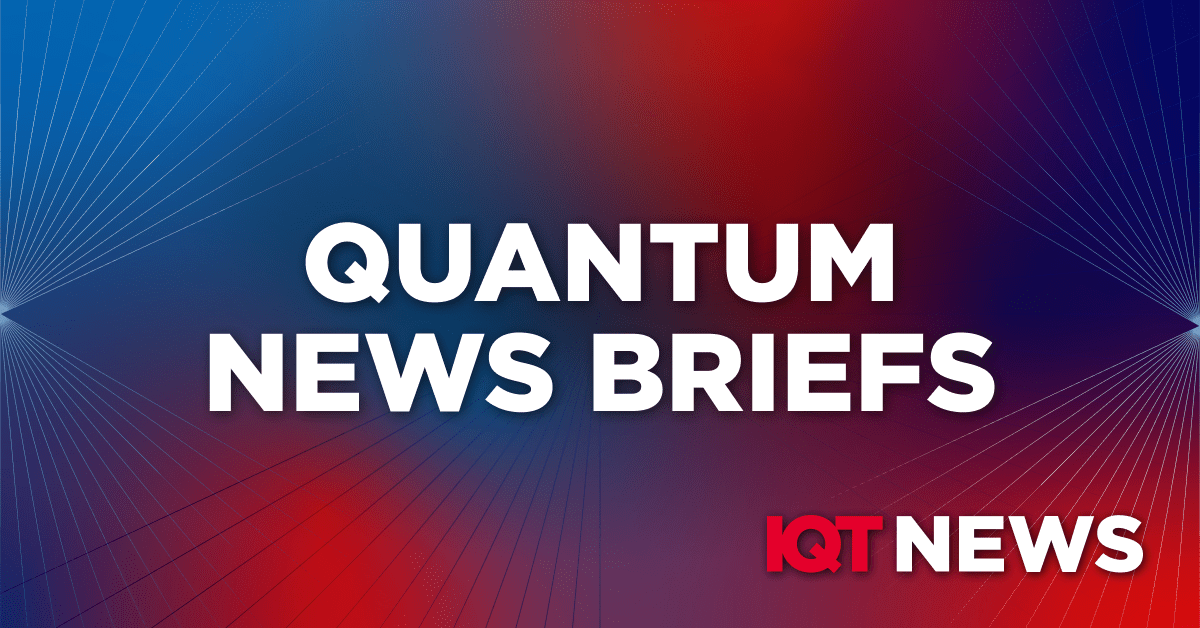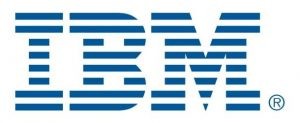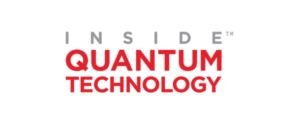
By Sandra Helsel posted 17 Jun 2024
In Other News:
In Other News: Nikkei Asia reports on June 16 “IBM and Japan institute team up to develop next-gen quantum computer”
 Japan’s government-backed technology institute will partner with IBM to develop next-generation quantum computers, Nikkei Asia reported June 16.
Japan’s government-backed technology institute will partner with IBM to develop next-generation quantum computers, Nikkei Asia reported June 16.
The National Institute of Advanced Industrial Science and Technology and IBM aim to develop a quantum computer with 10,000 quantum bits, or qubits, which would be 75 times more than current quantum computers have.
The partners will also develop semiconductors and superconducting integrated circuits needed in the next-gen quantum computers.
The institute and IBM are expected to sign a memorandum of understanding and announce the deal in the coming days.
In Other News: IEEE Spectrum reports “Pushing out impurities from wafers points toward a million-qubit future”
Researchers in England have developed ways to eliminate the isotopes that disrupt the delicate qubit states in the silicon according to IEEE Spectrum June 16 issue. This process could make silicon-based quantum computing more feasible and cost-effective.
The Silicon-28 (28Si) isotope makes up more than 90 percent of natural silicon. But 4.5 percent of raw silicon is 29Si, containing one extra neutron, which effectively gives the isotope a net nuclear spin that can wreak havoc on a silicon qubit’s delicate electron spin states. So to make quantum computers with the maximum coherence times—and therefore computers that can sustain the longest and most complex computations—as much 29Si as possible should be removed or extracted somehow from a silicon qubit substrate.
Purified silicon-28 has no spin. The scaling potentials could be big, according to Andre Saraiva, head of solid state theory at the Sydney, Australia-based quantum computing startup Diraq.
A team of researchers from the University of Manchester in the UK and the University of Melbourne in Australia have come up with a novel approach to the problem. Rather than try to purify an entire silicon wafer, they chose to reduce the 29Si content of just the regions that would be used by a qubit.
Science Daily reports: Japan commercial partnership to develop “Cold (Neutral) Atom” quantum computers
Institute for Molecular Science (IMS), National Institutes of Natural Sciences, has established a “Commercialization Preparatory Platform (PF)” to accelerate the development of novel quantum computers, based on the achievement of a research group led by Prof. Kenji Ohmori according to June 17 SciTechDaily. The launch of the PF was made possible by collaboration with 10 industry partners, including companies and financial institutions.
The IMS will leverage the expertise of the participating companies and seek for advice and support on matters related to commercialization, such as the processes of establishing a start-up company, developing domestically produced quantum computers, and R&D efforts to enable practical application of quantum computers and their associated services. It plans to launch a start-up company by the end of its FY2024 and begin the development of “cold (neutral) atom” quantum computers.
The 10 partners that joined the PF include (listed alphabetically): blueqat Inc., Development Bank of Japan Inc., Fujitsu Limited, Groovenauts, Inc., Hamamatsu Photonics K.K., Hitachi, Ltd., and NEC Corporation.
Microsoft Start Reports: Experimental observation of Earth’s rotation with quantum entanglement
 A team of researchers led by Philip Walther at the University of Vienna carried out a pioneering experiment where they measured the effect of the rotation of Earth on quantum entangled photons. The work, published in Science Advances, represents a significant achievement that pushes the boundaries of rotation sensitivity in entanglement-based sensors, potentially setting the stage for further exploration at the intersection between quantum mechanics and general relativity.
A team of researchers led by Philip Walther at the University of Vienna carried out a pioneering experiment where they measured the effect of the rotation of Earth on quantum entangled photons. The work, published in Science Advances, represents a significant achievement that pushes the boundaries of rotation sensitivity in entanglement-based sensors, potentially setting the stage for further exploration at the intersection between quantum mechanics and general relativity.
Optical Sagnac interferometers unparalleled precision makes them the ultimate tool for measuring rotational speeds, limited only by the boundaries of classical physics. Interferometers employing quantum entanglement have the potential to break those bounds.
The experiment, which was conducted as part of the research network TURIS hosted by the University of Vienna and the Austrian Academy of Sciences, has successfully observed the effect of the rotation of Earth on a maximally entangled two-photon state. This confirms the interaction between rotating reference systems and quantum entanglement, as described in Einstein’s special theory of relativity and quantum mechanics, with a thousand-fold precision improvement compared to previous experiments.
- SEO Powered Content & PR Distribution. Get Amplified Today.
- PlatoData.Network Vertical Generative Ai. Empower Yourself. Access Here.
- PlatoAiStream. Web3 Intelligence. Knowledge Amplified. Access Here.
- PlatoESG. Carbon, CleanTech, Energy, Environment, Solar, Waste Management. Access Here.
- PlatoHealth. Biotech and Clinical Trials Intelligence. Access Here.
- Source: https://www.insidequantumtechnology.com/news-archive/quantum-news-briefs-june-17-ibm-and-japan-institute-team-up-to-develop-next-gen-quantum-computer-pushing-out-impurities-from-wafers-points-toward-a-million-qubit-future-experiment/
- :has
- :is
- :where
- $UP
- 000
- 1
- 10
- 12
- 13
- 16
- 17
- 19
- 2024
- 210
- 24
- 29
- 300
- 628
- 7
- 75
- 8
- 9
- a
- Academy
- accelerate
- According
- achievement
- advanced
- advice
- aim
- All
- also
- alt
- an
- and
- andre
- Announce
- Application
- approach
- ARE
- AS
- asia
- associated
- At
- Australia
- austrian
- Bank
- bank of japan
- based
- BE
- begin
- between
- Big
- bits
- boundaries
- bounds
- Break
- but
- button
- by
- CAN
- carried
- categories
- chose
- collaboration
- come
- coming
- commercial
- commercialization
- Companies
- company
- compared
- complex
- computer
- computers
- computing
- conducted
- content
- CORPORATION
- cost-effective
- could
- Current
- daily
- Days
- deal
- described
- develop
- developed
- developing
- Development
- Development Bank
- Disrupt
- domestically
- earth
- effect
- effectively
- efforts
- eliminate
- employing
- enable
- end
- England
- entanglement
- Entire
- established
- establishing
- expected
- experiment
- experimental
- experiments
- expertise
- exploration
- extra
- false
- feasible
- financial
- Financial institutions
- For
- from
- Fujitsu
- further
- future
- General
- gives
- Group
- Have
- head
- High
- hosted
- HTTPS
- IBM
- IEEE
- image
- improvement
- in
- Inc.
- include
- Including
- industrial
- industry
- industry partners
- inside
- Inside Quantum Technology
- Institute
- institutions
- integrated
- interaction
- intersection
- isotopes
- issue
- IT
- ITS
- Japan
- joined
- jpg
- june
- just
- launch
- Led
- Leverage
- Limited
- Listed
- Ltd
- made
- make
- MAKES
- manchester
- Matters
- max-width
- maximum
- measured
- measuring
- mechanics
- Melbourne
- Memorandum
- molecular
- more
- most
- much
- National
- Natural
- NEC Corporation
- needed
- net
- network
- Neutral
- news
- next-generation
- no
- novel
- nuclear
- observation
- of
- on
- ONE
- only
- or
- Other
- out
- part
- participating
- partner
- partners
- Partnership
- percent
- Photons
- Physics
- Pioneering
- plans
- platform
- plato
- Plato Data Intelligence
- PlatoData
- points
- possible
- posted
- potential
- potentially
- potentials
- Practical
- Precision
- previous
- Problem
- process
- processes
- Produced
- prof
- pushes
- Pushing
- Quantum
- Quantum Computer
- quantum computers
- quantum computing
- quantum entanglement
- Quantum Mechanics
- quantum technology
- Qubit
- qubits
- R&D
- rather
- Raw
- reduce
- reference
- regions
- related
- relativity
- Removed
- Reported
- Reports
- represents
- research
- researchers
- ROW
- scaling
- Science
- Science and Technology
- SCIENCES
- Seek
- Semiconductors
- Sensitivity
- sensors
- Services
- setting
- should
- sign
- significant
- Silicon
- silicon qubit
- So
- solid
- somehow
- special
- Spectrum
- speeds
- Spin
- Stage
- start
- Start-up
- startup
- State
- States
- substrate
- Successfully
- such
- superconducting
- support
- sydney
- Systems
- team
- Technology
- than
- that
- The
- the UK
- their
- Them
- theory
- therefore
- they
- this
- those
- times
- to
- tool
- toward
- true
- try
- Uk
- ultimate
- understanding
- university
- unparalleled
- used
- was
- ways
- which
- will
- with
- Work
- would
- zephyrnet













